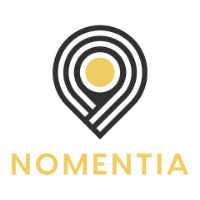7 Cash Management Trends for 2022
16-02-2022 | treasuryXL | Nomentia | LinkedIn |
While the show must go on and treasury and finance teams had a busy life at the start of the year, it’s time to take a look at the ever rapidly changing cash management trends of 2022.

While PWC has predicted that the top priorities for CFOs in 2022 will be advanced cash and liquidity management, technology and digital innovation, fraud and cybersecurity, and business partnering, we also internally discussed what trends we see emerging during the new year.
1. Digitalization of the processes continues
A year ago, this time, we commissioned a Forrester study, ‘Successful Businesses Excel At Cash Management’, to discover how top decision-makers see the state of cash management. We were ready for some interesting findings but what we found was even more interesting than what we expected.
Clearly, during the past years, a lot has changed as finance and treasury teams had to adjust to the new reality that the global pandemic has brought on all of us. While digitalization has been on the agenda of everybody for some time, it’s been time to speed up the transformation.
While the digital transformation has started in many enterprises already years ago, the work continues to reap the benefits of cloud-based cash and treasury management technology to improve organizational flexibility, cash management processes, and security.
Better digitalized processes do not only make the life of employees easier, but companies can also untap hidden cash, inject accurate forecasting into decision making while improving their day-to-day treasury and finance operations with automation.
While last year enabling home working and ensuring business continuity was a significant driver, for sure, we are moving towards a world where the next items on the cash management wish list will climb up the priority ladder.
2. Payment solution for cash flow efficiency
Payments are the core of every business process, but compliance is often the main driver for many to improve existing processes. It’s often the same when companies adopt a payment tool for their global payments to improve the efficiency of their global B2B payments. Having a single tool allows more control over how payments are processed, approved, and released to the banks.
Payment efficiency is also the first step for many other cash management priorities, such as better liquidity management and cash visibility
In the process of setting up a payment solution, the hardest part of working with ERPs, existing TMS, and multiple banks is also tackled and can be utilized for implementing new solutions along the way.
Adapting a tool for payment tool can also make centralized user rights management easier.
3. Security is an unavoidable topic
When we are talking about payments, we must discuss security. During last year, financial fraud cases have been making headlines globally. For compliance, organizations must have the basic security measures in place, but finance and treasury are departments that need more advanced risk mitigation capabilities to tackle financial crime and fraudulent attempts to safeguard the company’s funds and financial stability. To tackle security concerns, partnering up with the information security team and finding the right vendors can provide you with the necessary precautions.
Companies are starting to utilize artificial intelligence and machine learning for catching suspicious fraudulent activity or to spot manual errors.
As all companies could be subject to financial crime, investing in fraud prevention should be a no-brainer. It’s almost like insurance for minimizing the risk of an actual incident.
4. Outsourcing bank connectivity
You will rarely meet someone that would say that bank connectivity is not a challenge. Yet, it’s something that everybody must have in place. In the Forrester study, 76% of the respondents believed that bank connectivity for fetching statements and intraday material is valuable for their treasury and cash management activities.
Connecting to banks is a challenge due to the different communication protocols and file formats. When banks make changes on their end, the existing connectivity should reflect on that too.
This is only part of the challenge. On the other end, there should be a connection to ERP systems (like SAP or other) or to a TMS to fetch all the accounts payable data instantly. This requires working with another communication protocol and another data format.
Between the two different data formats, there must be a data mapping to make sure that the communication between the bank and the organization works flawlessly.
It is challenging enough to set up a bank connection with a single bank. Imagine doing this process with multiple banks
That’s why most organizations are opting for bank connectivity as a service where companies like Nomentia have already over 10 800 bank connections established and expertise to take care of the rest.
Ps.: We have also created a cool video on how easy it can be to outsource the management of your bank connections:
5. We are saying goodbye to spreadsheets
Let’s be honest, cash forecasting with excel is challenging:
- It’s easy to make an error
- It’s undocumented – if the owner of the spreadsheet leaves the company, it may take some time to understand the logic behind it
- There is no audit trail for compliance
Two of the main reasons that are holding back companies from purchasing a solution for liquidity management is the cost and the perception that it’s easy to create cash flow forecasts with spreadsheets and that is how it’s been always done. However, the trend is shifting and more companies start to realize that an actual liquidity management tool would have more benefits.
Using a tool for liquidity makes collecting forecasts and actuals automated and the data can be collected from multiple source systems to help to understand the organization’s current, past, and future liquidity positions to optimize cash flows and FX positions to optimize internal and external funding.
Liquidity management software today is extremely user-friendly and intuitive to use so that users can create reports easily to create accurate reports.
6. Reconciliation for all
Comparing bank statements against your accounting to make sure the amounts match each other is not too difficult for small firms where their clients and cash flows come from fewer sources and banks. In enterprises, reconciliation may not be so straightforward. In our Forrester survey, 61% of decision-makers say it’s challenging or very challenging to reconcile payments.
Thus, we expect that automation of the reconciliation process will be the star of 2022 so that organizations can streamline the process for faster month-end closing.
7. Alignment between treasury, finance, and IT
According to finance executives, the lack of alignment is the top barrier to better cash management. This is something that at Nomentia we’ve been experiencing firsthand. In a recent interview with TMI, Jukka Sallinen, Nomentia’s CEO said the following:
“Lack of collaboration between different functions within the organization is one of the significant hurdles. There should be more roadmapping and alignment between treasury, finance, and IT. Many solutions provided by software vendors have grown into do-it-all monolithic systems. That, unfortunately, often leads them to be mediocre at best and none of the three departments is entirely happy to work with them. In addition, while there has been lots of talk about open banking and standardization to improve the efficiency of cash management processes, most of these promises have remained unfulfilled.
I believe treasurers want more flexible and fast solutions that can solve their specific challenges and integrate well with their core treasury management system (TMS) and other systems. While it is obviously everyone’s responsibility to look at the big picture, maintaining the growing number of systems and surveying the providers’ landscape is often left to IT. Greater collaboration would be preferable.”
Setting up new solutions, bank connections, or improving security requires cooperation between the different stakeholders and in 2022 they will need to strengthen their alliance for actualizing the strategic benefits of cash management.
Cash Management tools are becoming more democratic
Cash management solutions becoming more accessible for businesses of all sizes. As it’s time to digitalize treasury and finance, there are affordable options available for anybody for all the solutions mentioned above. A payment factory, liquidity management, or reconciliation can be easily implemented for a fair price tag in almost any business. The trend has been moving from one-size-fits-all solutions to a hyper-modular approach: you take the solution that you need and integrate it into your existing solution stack so that you can pick the best solutions from different vendors.
Of course, implementation of new cash management solutions will require cooperation and alignment between different departments, prioritization, as well as finding the right strategic vendor that can support the organization’s finance and treasury roadmap.












